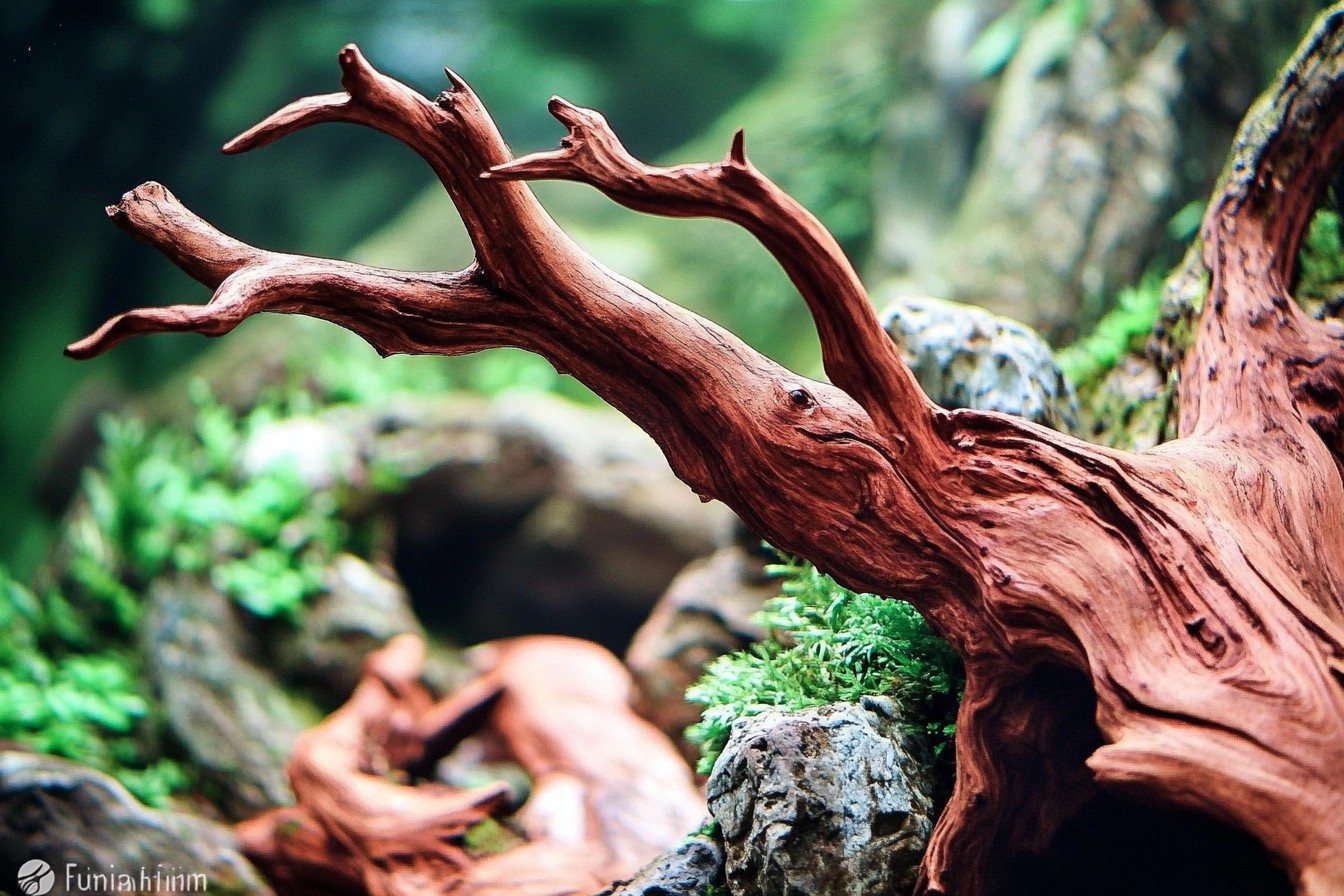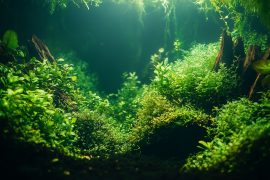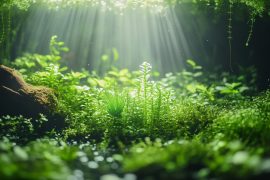Once, I devoted an entire afternoon to the seemingly mundane task of rock searching, submerging myself in a river while my friends mocked my sanity from the shore. That’s right; the rock I was searching for was not ‘any ol’ rock,’ instead the glorious centerpiece to an elaborate competition aquascape I had been salivating over for months. While my friends boldly sipped beer on the shore, shouting insults my way, I was sure I would find the ideal stone along my sea of terraces. “When I find it, I’ll just… know,” I declared.
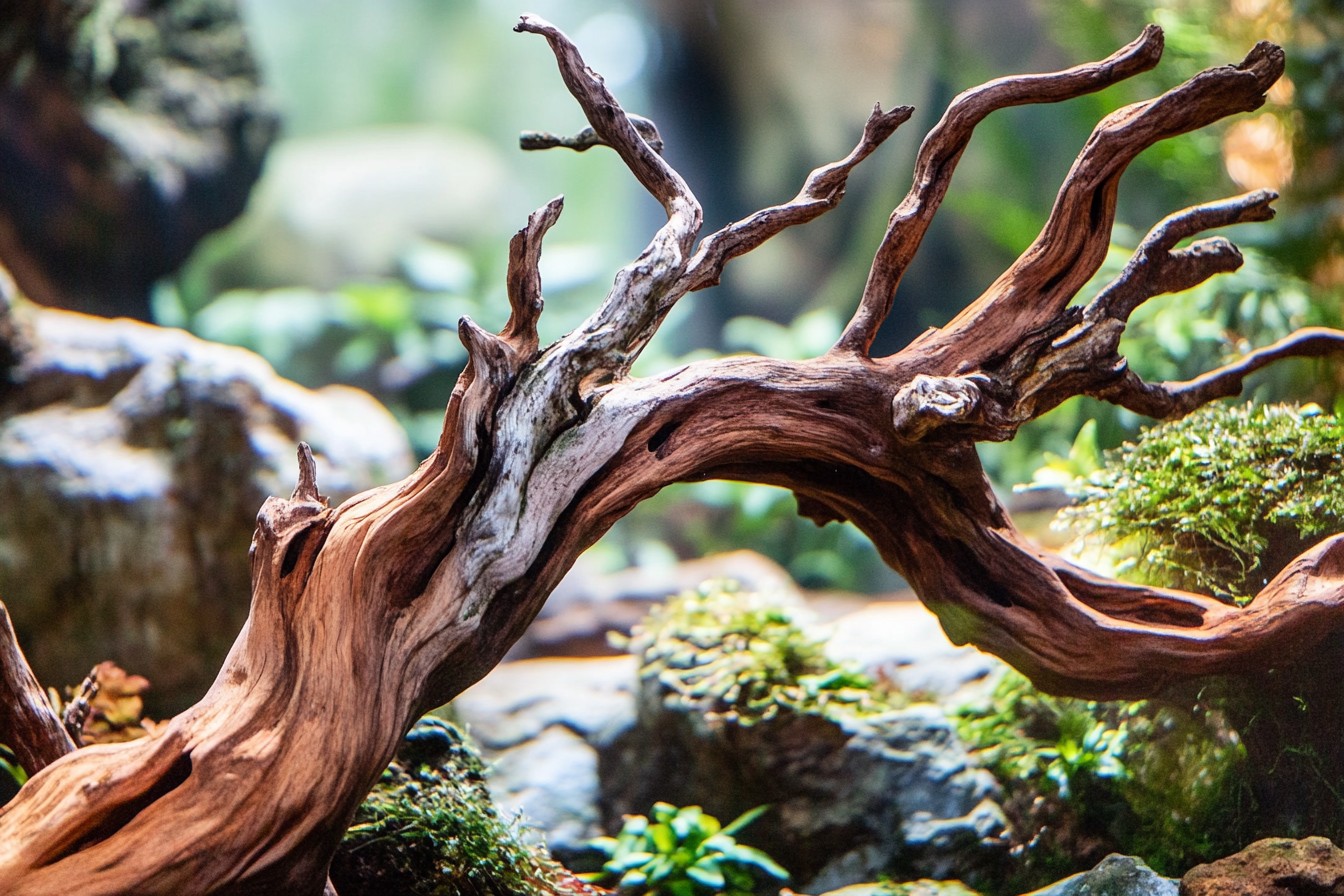
To my shock, I did. While I was certain the rough features would result in some fierce competition, it was the delicate weathering patterns that sparked my love. The thin layers of sedimentary stone fashioned terraces where stunning patches of Anubias nana ‘Petite’ could thrive. I find it awfully rude that he not only startled me while I was showcasing my new specialized rock, but also while I let out my victory cheer of “THIS IS IT” formulated to Hail Mary.
Theodore is rather special to me, mainly because it is the stone that sparked a diving aquascape that finally earned me second place in a regional contest. The judges commented on how beautifully integrated the hardscape was with the plants and gave special praise to the natural wear patterns. If only they knew the vivid backstory of my damp jeans, charred neck, and the three now bitter friends who were reluctantly forced into a hiking trip that borders on water.
This is what non-aquascapers don’t get about why we are obsessed with driftwood and hardscape materials. Unlike the non-aquascaper, who believes we put these items in to make the tank look nicer, they serve a purpose. They are the skeletons of an underwater landscape and are the most defining aspect that will answer the question: do we have a natural landscape or just a fish tank with random objects inside.
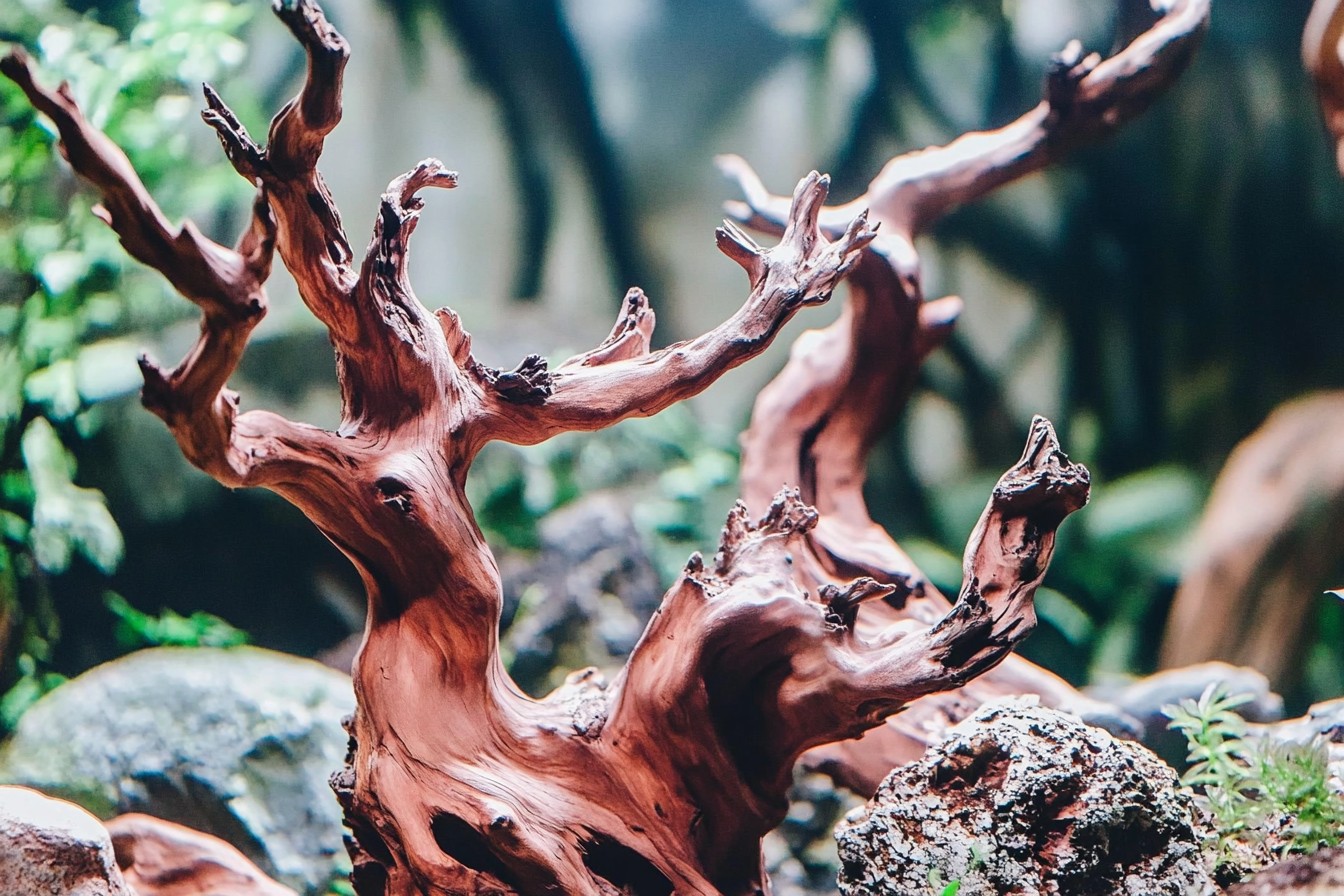
I watched beautiful, expensive rare plants get completely obliterated in tanks with hardscape design asfterthoughts. Like this one guy who spent nearly $300 on rare buces and criptocorines and arranged thme around a plastic castle and blue gravel. It made me want to cry. On the other hand, I came across aquascapes using basic, inexpensive plants that were executed beautifully and the reason they worked was because the hardscaper knew how to use wood and stone in terms of structure, flow, and focal points.
After so many years of trials *and* errors (we will get to some of those disasters shortly), I have come to terms of being somewhat of a hardscape evangelist, telling people to “spend time on your rocks and wood first, worry about fancy plants later.” Knowing my students in the workshop probably gets annoyed by me saying this.
Let’s start with driftwood because this is where most people get into the hobby, including myself. My first “serious” planted tank was a single piece of mopani wood sitting directly in the center of the tank which is the aquascaping definition of a child’s stick figure drawing. I self-think, with how i look at it now, that it is incredible. The pictures will, however, always make me want to travel back in time and shake my head.
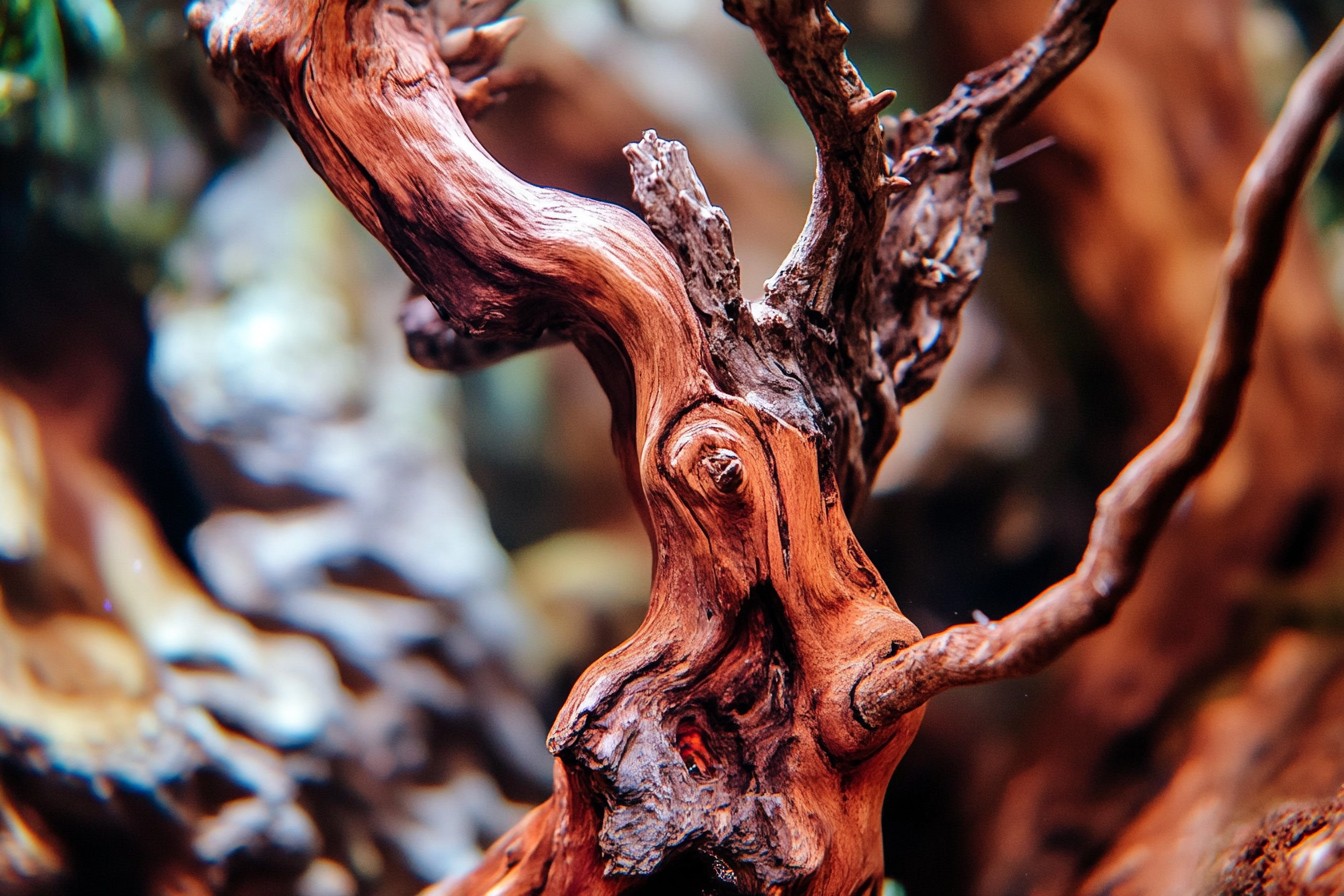
Things completely changed when a mentor taught me to think of driftwood not as singular showpieces but rather components in a larger, intricate composition. Now, I hardly ever use less than five pieces of wood in a single layout, meticulously choosing pieces that work together in terms of form and polish. Spider wood (also referred to as azalea or rhododendron root) provides those intricate delicate branching structures that are ideal for emulating trees or reaching limbs. Mopani driftwood as well as Malaysian driftwood provide bulkier, more robust shapes that form the table and sculpt caves and overhangs.
Which disaster taught me the most? The stunning 90-gallon tank that set up for a more fancier restaurant with an elaborate arch of Malaysian driftwood that I had painstakingly assembled from three perfect pieces of Malaysian driftwood was one of my favorites. It seemed spectacular, that is until the third day when the wood absorbing water, expanding ever so slightly, and the pressure in my carefully placed pieces popping apart like a spring-loaded trap. Bearded man in a panic, arms submerged in the tank, attempting to reassemble a collapsed underwater world while fish swam chaotically between his fingers was treated to such a spectacle. To my surprise, the owner was calm through it, but I still feel the shivers.
These days, I always pre-soak wood for at least two weeks prior to final placement and secure complex arrangements with hidden stainless steel screws or zip ties. Extra prep time is well worth the long-term stability and avoiding social embarrassment.

Rocks present their own problems and pleasures. The aquascaping world has gone through distinct ‘rock fashion trends’ over the years – from rounded river stone to sharp dragon stone, through seiryu stone and now with the increasing popularity of ohko stone or dragon stone. Each possesses specific characteristics that alter your entire tank ecosystem.
For years, Seiryu stone’s stunning light grey-blue color paired with white striations easily ranked it among the best stones for aquascaping. I used it exclusively until I discovered that it was slowly increasing both the pH and hardness in my tanks – certainly not suitable for the delicate water plants I was trying to cultivate. With the correct light and CO2 I always fabricated, I kept wondering why my Tonina died. Switching over to granite and quartzite provided a solution to the issue, but came with new problems related to aesthetics. I devoted months trying to understand how to arrange these less naturally structured stones to create dramatic landscapes while still making them visually appealing.
Actual terrestrial landscape design books hold the most valuable information for me. They’ve taught me concepts of Japanese gardens, which allowed me to think about rock placements in a different manner. I learned that it’s more effective to arrange rocks deliberately instead of trying to make them appear randomly scattered. My new method required arranging stones using odd numbers, asymmetric triangles with strong focieman secondary and tertiary stones reinforcing supporting elements. Once I started following these rules in my next aquascape, results were instant and astonishing. My girlfriend at that time remarked, “Wait, did you buy new rocks?” No, the rocks are the same, but this time they’re organized in a practical way instead of my previous method of “toss and pray.”
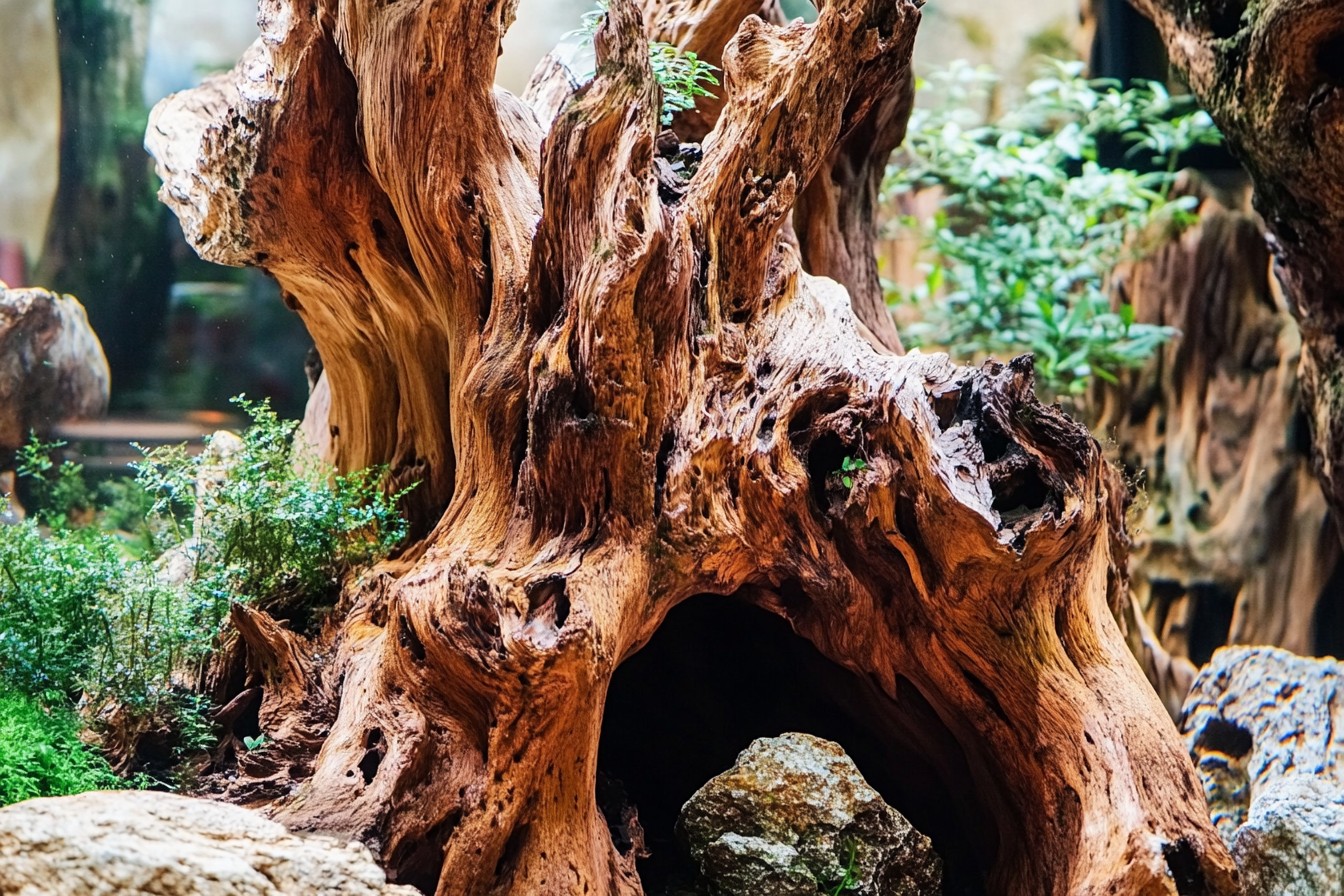
As an alternative opinion which does not seem to be published anywhere in the web or any literature, I’d believe that most aquascapers use far too many rock varieties in a single layout. I distinctly remember an event which was a local competition where one contestant had a tank which contained five different types of stone – granite, seiryu, ohko, lava rock, and what looked like some gravel that one would use in landscaping for ponds and more. Instead of resembling a smooth underwater grasp, this looked like a sample geological collection. Hardscape designs which you create should emulate the fact that there is consistency in the nature’s littered local environment, which is why this one was erratic. I also remember quite vividly an argument I got into with a judge for another contest. He thought that the multiple diverse choices of stones portrayed creativity. I happened to think the opposite, and believe it showed a lack of reason on how natural environments’ are shaped. So much so that we stopped talking entirely at hobby oriented events. While we understand each other now on don’t speak much at hobby events.
The other judge decided to wrap up with perhaps the most important lesson we all should take home: the hardscape is the one that has to tell the story. Whether it be one of wood or stone, every arrangement has cannot be overlooked suggests something about how this environment came to be. Which goes deeper as to if your driftwood is actually configured to resemble a broken tree. Are your rocks positioned as if they have slowly been coming from bigger formations over time? These subtle narrative elements me in ways that were impactful change ordinary to feeling to the stunning slice of nature.
The mixed media approach has brought about completely new opportunities in the past few years. My current home display integrates hardscape traditional features with parts of 3D terrain models that I printed and designed specifically for the tank. My wife thinks I’ve lost it, spending countless hours designing computer-aided rock formations that, in her words, I could “just buy at the store.” However, the ability to create precisely what I require has been phenomenal, particularly for the detailed course of shaping reliefs.
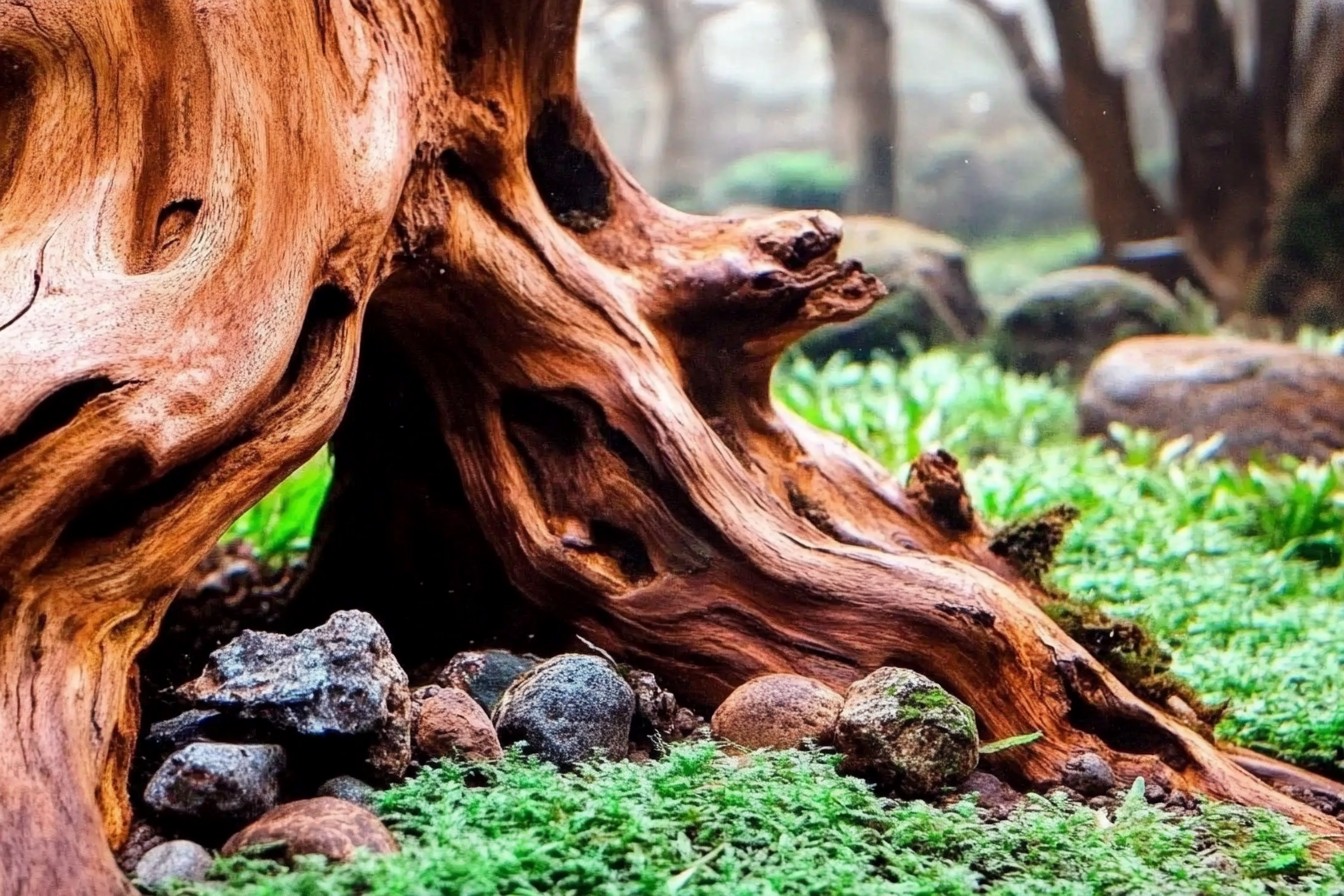
The safe ceramics and structures from glass, in addition to preserved plant materials such as seedpods and leaves, create another dimension of realism. These natural botanicals – particularly seed pods, leaves, and tropical tree nuts – have fundamentally changed my methods of creating biotope-accurate aquascapes. Adding properly prepared Indian almond leaves and cones of alder or even guava leaves does not only make the substrate look more natural; it impacts the chemistry of the water in a positive way, most especially for black water biotopes. The tannins released create stunning tea colored water while slightly lowering the pH and providing anti-fungal and anti-bacterial properties, which is beneficial.
I have even begun harvesting natural materials from my area while ensuring they are thoroughly sanitized. After curing pine cones, they become exceptional structural elements for nano aquaria since they aesthetically augment the aquascape and biologically break down over time. Small cypress knees I collected from a local swamp are some of my favorite botanicals for a nano tank. They create a haunting forest effect under water like no commercial hardscape material could replicate. Do be careful about what you collect, there should be no need to harm natural areas for your hobby.
By far the most frequent question I get from beginners is how to achieve depth in smaller tanks with aquascaping. The trick that I wish I had learned long ago is to work against the glass instead of parallel to it. Your focal points and other major hardscape pieces should be placed to extend from the front to the back, not from side to side. This way depth is manipulated creating forced perspective, making it possible to make even the smallest tanks appear larger than they are. In my 5 gallon desktop tank, I arranged stone in a way that draws the viewer’s eye towards a piece of driftwood located at the back corner of the tank. The arrangement, alongside the tank’s dimensions, serves to create an illusion that makes the tank seem twice its actual size.
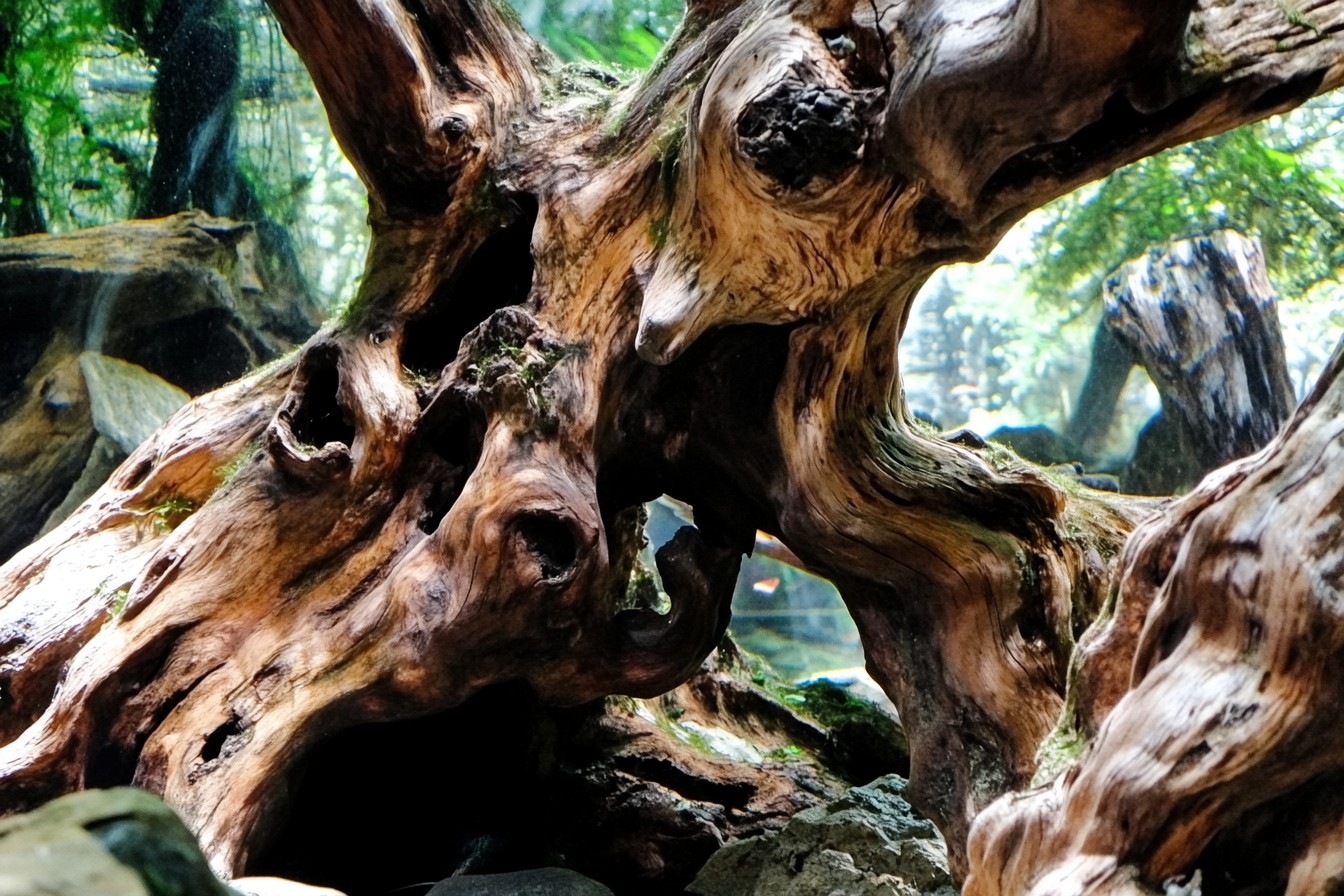
Through safe experimentation, you can develop your own hardscape style. Personally, I utilize a plastic storage bin filled with water to test various hardscape layouts before assembling the actual tank. Although my wife keeps saying she will throw it out for being an eyesore, I cannot imagine how much frustration it has saved me and has assisted me in previewing material interactions prior to any water touches the main tank. In my opinion, some marital conflict is a small price to pay.
Even after all these years, I still experience child-like joy when searching for a new piece of hardscape, or when receiving shipments of interesting wood and stone. With every shipment, I feel as though I am being gifted potential energy, as I am presented with new pieces of stone which can assist me in underwater world creation. Sometimes I will sit with a particularly interesting piece of driftwood for weeks while turning it over and re-evaluating it to decide how I want to incorporate it into my work. My spouse thinks I am insane. Maybe I am, but I’d like to think of myself as dedicated.
Ultimately, having good hardscaping comes down to balancing the technical aspects (structural stability, water chemistry impacts, plant compatibility) with the artistic features (composition, scale, visual flow). If done well, the hardscape serves as a foundation for tropical aquatics in such a way that viewers are left wondering if what they are looking at is a genuine artificial ecosystem.
And really, isn’t that the purpose of every aquascaping endeavor? That single moment when somebody gazes into the tank and believes for an instant that they are looking through a portal into another realm, and not simply a glass box filled with water in your living room? The prized rocks you scavenged for in a river while your friends questioned your life choices… Worth it every time.
